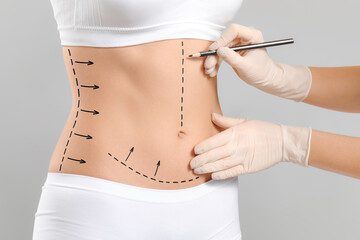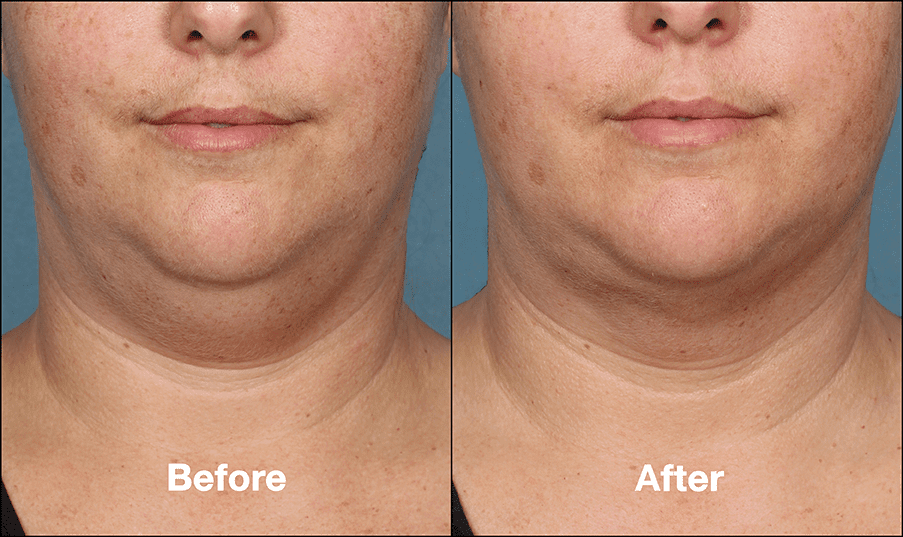Liposuction vs. Non-Surgical Fat Reduction: How to Choose the Best Option for You
Posted on October 15, 2024Liposuction vs. Non-Surgical Fat Reduction
 When it comes to body contouring, there are various methods available to help eliminate stubborn fat that doesn’t respond to diet and exercise. Two popular options are traditional liposuction and non-surgical fat reduction techniques like CoolSculpting and SculpSure. Understanding the differences between these methods, their benefits and drawbacks, and how to choose the best option for your needs is crucial for achieving the best results.
When it comes to body contouring, there are various methods available to help eliminate stubborn fat that doesn’t respond to diet and exercise. Two popular options are traditional liposuction and non-surgical fat reduction techniques like CoolSculpting and SculpSure. Understanding the differences between these methods, their benefits and drawbacks, and how to choose the best option for your needs is crucial for achieving the best results.
Liposuction: The Traditional Approach
Liposuction is a surgical procedure designed to remove excess fat from specific areas of the body. It involves making small incisions and using a cannula to suction out fat deposits. Here’s what you need to know about this method:
Benefits:
- Immediate Results: Liposuction provides immediate fat removal, with visible results often seen within a few weeks.
- Effective for Larger Areas: It can treat larger areas and remove significant volumes of fat.
- Long-Lasting Results: Once fat cells are removed, they don’t regenerate, leading to long-lasting body contouring, provided you maintain a stable weight.
Drawbacks:
- Invasive: Being a surgical procedure, liposuction involves incisions, anesthesia, and a recovery period.
- Recovery Time: It typically requires a recovery period of a few weeks, during which swelling and bruising may occur.
- Risks and Complications: As with any surgery, there are risks such as infection, scarring, and anesthesia complications.
Non-Surgical Fat Reduction Methods
Non-surgical fat reduction techniques are less invasive options that use various technologies to target and eliminate fat cells. Here’s a comparison of some popular non-surgical methods:
1. CoolSculpting (Cryolipolysis):
How It Works: CoolSculpting uses controlled cooling to freeze and destroy fat cells. The process is known as cryolipolysis, and the body gradually eliminates the dead fat cells over several months.
Benefits:
- Non-Invasive: No incisions or anesthesia are required, and the procedure is typically well-tolerated.
- Minimal Downtime: Most patients resume normal activities immediately after the session.
- Gradual Results: Results appear gradually over a few months, providing a natural-looking outcome.
Drawbacks:
- Limited Fat Reduction: It is most effective for smaller areas and may not be suitable for significant fat removal.
- Multiple Sessions Needed: For optimal results, multiple sessions may be required.
- Results Vary: Some patients may experience varying degrees of fat reduction.
2. Non-Surgical Skin Tightening
Loose and sagging skin can detract from both your appearance and comfort, but surgical options that excise and tighten skin are not always ideal for the area or for a patient’s needs. At Fiala Aesthetics, we offer FDA-approved nonsurgical skin tightening treatments designed to safely and effectively stimulate collagen and elastin production, allowing skin texture and tone to improve with little to no downtime. See options here.
3. Kybella (Deoxycholic Acid Injections):

Kybella (Deoxycholic Acid Injections) Injections Before & After
How It Works: Kybella involves injecting deoxycholic acid, a substance that helps break down and absorb dietary fat, into targeted fat areas, like under the chin.
Benefits:
- Non-Surgical: No incisions or general anesthesia are needed.
- Effective for Small Areas: Especially effective for localized fat, such as the double chin.
- Permanent Results: The fat cells destroyed by Kybella do not return.
Drawbacks:
- Multiple Injections Required: Several treatments may be needed to achieve desired results.
- Possible Side Effects: May include swelling, bruising, and discomfort at the injection site.
Choosing Between Surgical and Non-Surgical Options
When deciding between liposuction and non-surgical fat reduction methods, consider the following factors:
- Desired Results:
- Liposuction: Ideal for significant fat removal and larger areas.
- Non-Surgical: Best for smaller areas and moderate fat reduction.
- Recovery Time:
- Liposuction: Requires a recovery period of several weeks.
- Non-Surgical: Minimal downtime, with most patients resuming normal activities immediately.
- Risk Tolerance:
- Liposuction: Involves surgical risks and potential complications.
- Non-Surgical: Less risk, but potential for minor side effects and variable results.
- Budget and Time:
- Liposuction: Generally more expensive due to the surgical nature and may involve additional costs for anesthesia and recovery.
- Non-Surgical: Usually less expensive per session, but multiple treatments may be needed.
- Personal Preferences:
- Consider whether you prefer a more immediate and dramatic result or are comfortable with a gradual improvement.
Both liposuction and non-surgical fat reduction methods offer effective solutions for body contouring, but they cater to different needs and preferences.
Liposuction is suitable for those seeking substantial fat removal and are prepared for a surgical procedure with a recovery period. Non-surgical options like CoolSculpting, SculpSure, and Kybella offer less invasive alternatives with minimal downtime but may require multiple sessions and may not provide as dramatic results.
Consulting with a qualified medical professional can help you determine the best option based on your goals, lifestyle, and individual circumstances. Whichever method you choose, maintaining a healthy lifestyle will be key to achieving and preserving your desired results.
For More Information on the Treatments and Procedures offered, contact award-winning Board Certified Plastic Surgeon Dr. Thomas Fiala at Fiala Aesthetics in Greater Orlando to Schedule Your Consultation:
Voted the #1 Best Plastic Surgeon in Orlando, Florida by the readers of Orlando Magazine.
Serving patients in and around Greater Central Florida: Orlando, Altamonte, Lake Mary, Maitland, Winter Park, Clermont, Casselberry, Lake Mary, Longwood, Celebration, Heathrow, Windermere, Dr. Phillips, Sanford, Deltona, Deland, Daytona Beach, Melbourne, Cocoa Beach, New Smyrna Beach, Ocala, The Villages and more.


